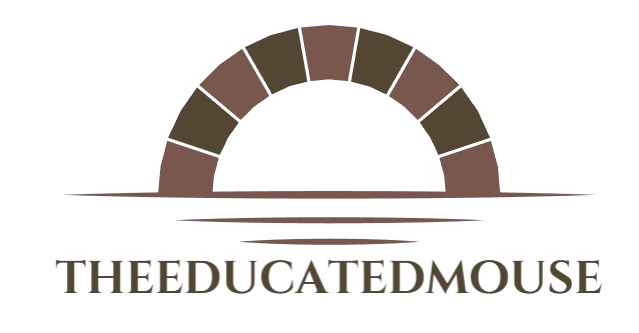Tutoring is more than a side gig—it’s a powerful partnership that helps students bridge gaps, build confidence, and discover their own potential. As a tutor, you become both guide and coach, tailoring instruction to each learner’s needs while fostering an environment where curiosity and resilience can flourish. Here’s a fresh look at the multifaceted responsibilities that make great tutors truly transformative.
1. Crafting Clear, Motivating Goals
Every successful tutoring journey begins with a roadmap. Before diving into content, take time to understand where your student stands and where they want to go.
- Diagnose Needs: Use informal quizzes or thoughtful conversation to identify strengths, stumbling blocks, and personal aspirations.
- Define SMART Objectives: Translate those insights into Specific, Measurable, Achievable, Relevant, and Time-bound goals—for example, “Master long division by the end of three weeks” or “Improve essay clarity to earn B+ or higher.”
- Design a Study Plan: Sketch out a step-by-step schedule, mapping topics to calendar dates and building in review sessions. This structured approach turns intimidating tasks into manageable milestones.
By involving students in goal-setting, you spark ownership and keep motivation alive throughout the tutoring process.

2. Personalized Instruction: One Size Doesn’t Fit All
Tutoring shines when it adapts to each learner’s style, pace, and interests.
- One-on-One Sessions: In focused pairings, you can probe misunderstandings, model problem-solving, and celebrate incremental wins—luxuries often missing in crowded classrooms.
- Subject Mastery: Solid expertise in your field is a must. Whether you’re untangling algebraic expressions or exploring Shakespearean themes, your depth of knowledge builds student trust.
- Group Facilitation: Small cohorts benefit from peer-to-peer exchange. Guide discussions, encourage collaboration, and ensure each voice is heard, helping students learn from each other’s insights.
- Flexible Methodologies: From interactive simulations to Socratic questioning or hands-on manipulatives, mix and match approaches until you find what clicks for each learner.
A tutor’s true art lies in continually refining these methods to fit individual needs.
3. Cultivating a Positive Learning Atmosphere
An encouraging, well-organized setting primes the mind for growth.
- Positive Reinforcement: Celebrate curiosity and effort. A simple “You’ve really improved your neat lines in your geometry diagrams!” can light up a student’s confidence.
- Resource Readiness: Keep materials—textbooks, digital tools, manipulatives—within easy reach. Regularly update them to reflect current curricula or fresh perspectives.
- Logistics and Ambiance: In person, arrange a tidy, well-lit space free from distractions. Online, ensure stable tech, clear audio, and a clutter-free virtual background so your student stays focused on the lesson.
When students feel supported and equipped, they’re free to experiment, ask questions, and take intellectual risks.
4. Tracking Progress and Offering Constructive Feedback
Monitoring growth isn’t about grades—it’s about guiding improvement.
- Milestone Mapping: Use simple charts or checklists to record achievements—chapter completions, quiz scores, or successful practice essays.
- Targeted Feedback: Highlight what’s working (“Your thesis statement is crystal clear”) before gently steering attention to areas for refinement (“Next time, let’s strengthen your supporting examples”).
- Comprehensive Reports: For parents or program coordinators, prepare concise summaries using graphs or bullet points to show progress trends and next steps.
This ongoing dialogue turns abstract “grades” into actionable insights.
5. Embracing Lifelong Professional Growth
Great tutors never stop learning.
- Continued Education: Whether it’s new math pedagogy, literacy strategies, or technology integration, invest in courses and certifications that sharpen your toolkit.
- Workshops and Webinars: Regularly attend sessions on emerging educational technologies or differentiated instruction to stay ahead of the curve.
- Peer Networking: Collaborate with fellow tutors and teachers—sharing war stories, swapping resources, and trading feedback can spark fresh ideas and renewed enthusiasm.
Your commitment to professional development enriches every session and demonstrates a model of lifelong learning for your students.
6. Managing Administrative Essentials
Behind every seamless tutoring session lies solid organization.
- Attendance and Participation Logs: Maintain clear records of dates, durations, and notes on engagement so you—and your student’s support network—always know what’s happening.
- Issue Reporting: If academic or behavioral concerns arise, draft concise updates for parents or program directors, outlining the challenge and proposed strategies.
- Scheduling and Billing: Whether through digital platforms or simple calendars, streamline appointments and invoicing to keep everyone on the same page.
These behind-the-scenes tasks ensure your energy remains focused on teaching, not logistics.
7. Mentoring and Emotional Support
Beyond academics, tutors can be trusted mentors, helping students navigate challenges both in and out of the classroom.
- Individual Check-Ins: Dedicate a few minutes each session to ask about their goals, stressors, or successes—showing you care about the whole person, not just test scores.
- Adaptive Encouragement: Tailor your support: some students need gentle reassurance, others thrive on candid pep talks.
- Building Study Habits: Guide them in time management, note-taking strategies, and self-assessment techniques that pay dividends across subjects.
By offering empathy and guidance, you help students develop resilience and self-directed learning skills that last a lifetime.
Conclusion
Tutoring is an art and a science, blending subject mastery with emotional intelligence, pedagogical flair, and meticulous organization. From establishing SMART goals and crafting personalized lessons, to cultivating a positive atmosphere, tracking growth, and pursuing your own professional evolution, each facet of your role converges to empower learners. When done thoughtfully, tutoring ignites a student’s confidence, transforms uncertainty into mastery, and lays the groundwork for success far beyond any single assignment or exam. Embrace these responsibilities with creativity and care, and witness the profound impact you can make—one breakthrough at a time.





